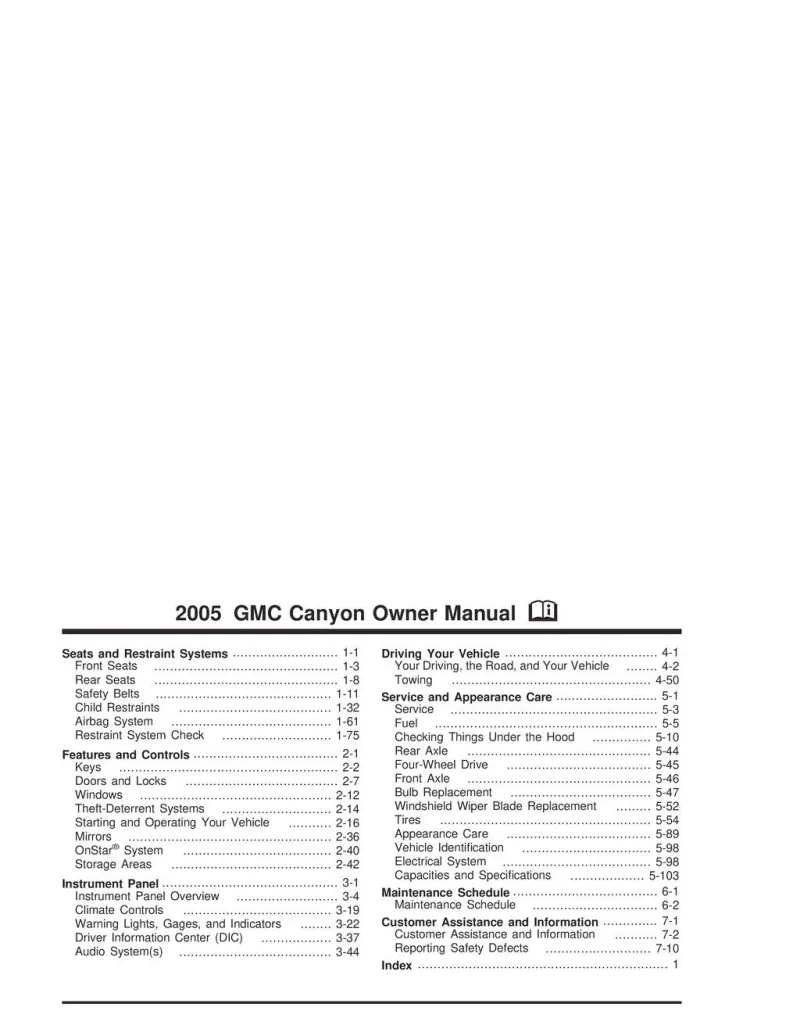2005 GMC Canyon Owner's Manual

Table of Contents
2005 GMC Canyon Overview
Introduction
The 2005 GMC Canyon is a versatile midsize pickup truck, ideal for both work and play. With a sturdy design, spacious interior, and capable performance, it caters to drivers seeking practicality without sacrificing style. Whether hauling gear for a weekend getaway or navigating urban streets, the Canyon stands out with its rugged charm and dependable engineering.
Powertrains
The 2005 Canyon offers a choice of powertrains to suit various driving needs. The base engine is a 2.8-liter four-cylinder that delivers a reasonable 175 horsepower, making it suitable for everyday tasks. For those requiring more power, a robust 5.3-liter V8 engine is available, producing 290 horsepower and enabling a confident towing capacity. Both engines are paired with a smooth-shifting four-speed automatic transmission, providing a balance of performance and efficiency.
Trims
The GMC Canyon comes in several trims, including the base model, SLE, and SLT, each offering distinct features to enhance the driving experience. The SLE trim adds convenience elements like premium cloth seating and an upgraded audio system, while the SLT trim elevates sophistication with leather seats, chrome accents, and additional technology features. This variety allows buyers to select a model that aligns with their preferences and budget.
Features
Owner's Manual
The owner's manual for the 2005 GMC Canyon is an essential resource, providing vital information on operating the vehicle, maintenance schedules, and troubleshooting tips. It guides owners through the features and capabilities of their truck, ensuring they can get the most out of their GMC Canyon and keep it running smoothly for years to come.
User manual download
The GMC Canyon owner manual for the 2005 model year is to be found in PDF downloadable format on this page. The owner manual for the model year 2005 is free and in English, but the repair manuals are usually not easy to get and may cost more.
Manual Questions
Fill the form below and someone will help you!

